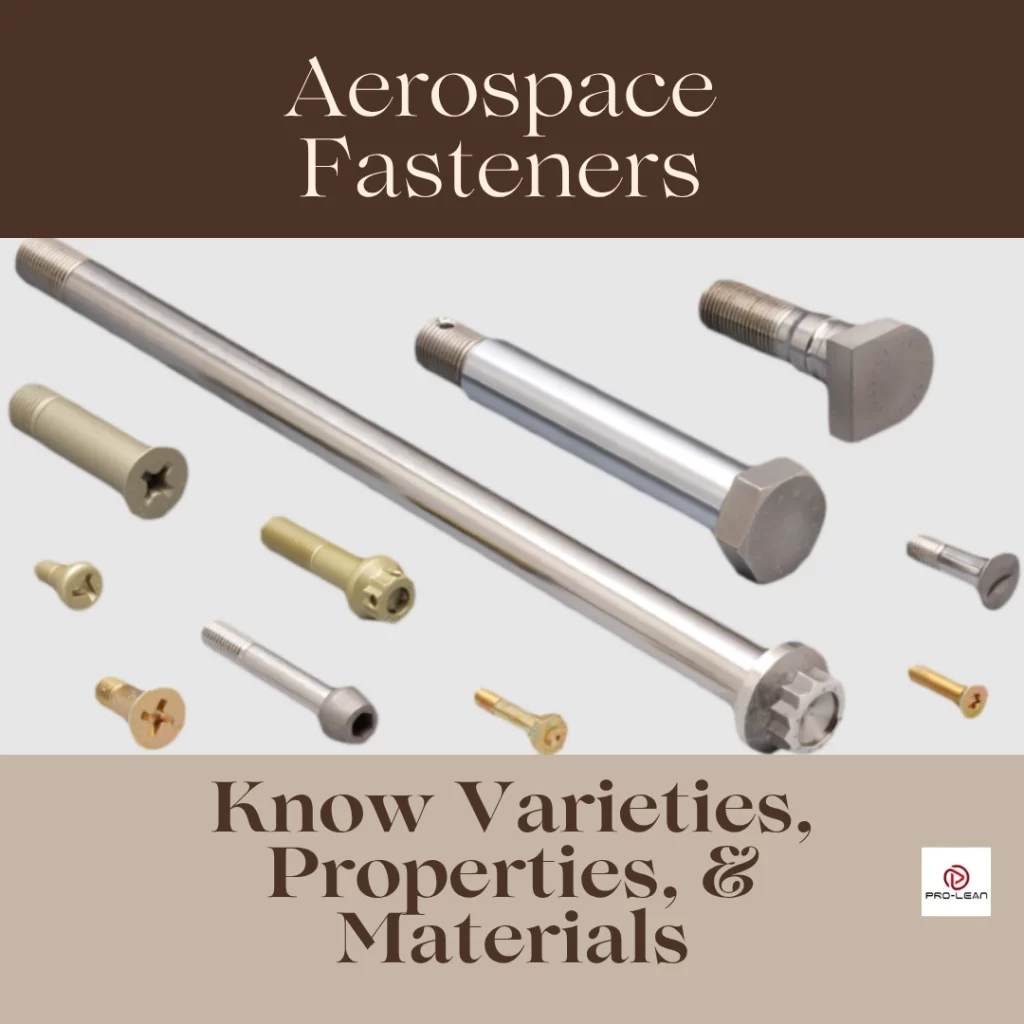
Aerospace fasteners
The development of modern aerospace fasteners has gone in pace with the rapid advancement in the sector. For a market that is expected to be worth more than USD 7.74 billion in 2030, it is understandable considering the growth experienced in the military and commercial aircraft spaces.
Using titanium and other high-strength-to-weight materials for fasteners has transformed fastening and assembly significantly. Aluminum and steel are examples of other fastener materials holding up for aerospace machines, literally.
Moreover, modern manufacturing technologies, subtractive or additive, have streamlined processes and help reduce manufacturing costs manifold. The requirements for effective engineered fasteners for aerospace applications have not changed from the yesteryears, though.
These fasteners must be strong, corrosion-resistant, durable, and capable of remaining reliable under extreme heat and stubborn weather.
This article will build on this and other information to provide a comprehensive coverage of aerospace fasteners. Read on for a review of aerospace fastener meaning, material options, types, and properties, among other things.
What Is An Aerospace Fastener?
An aerospace fastener is a special piece of hardware designed to join and hold together items in an aerospace design or assembly. This component is widely used to connect aircraft body parts tightly and securely.
The far-reaching application and meaning of the aerospace fastener is more conceivable if you consider what the aerospace industry encompasses. Spacecraft, commercial aircraft, military aircraft, and missile devices are all part of the aerospace industry.
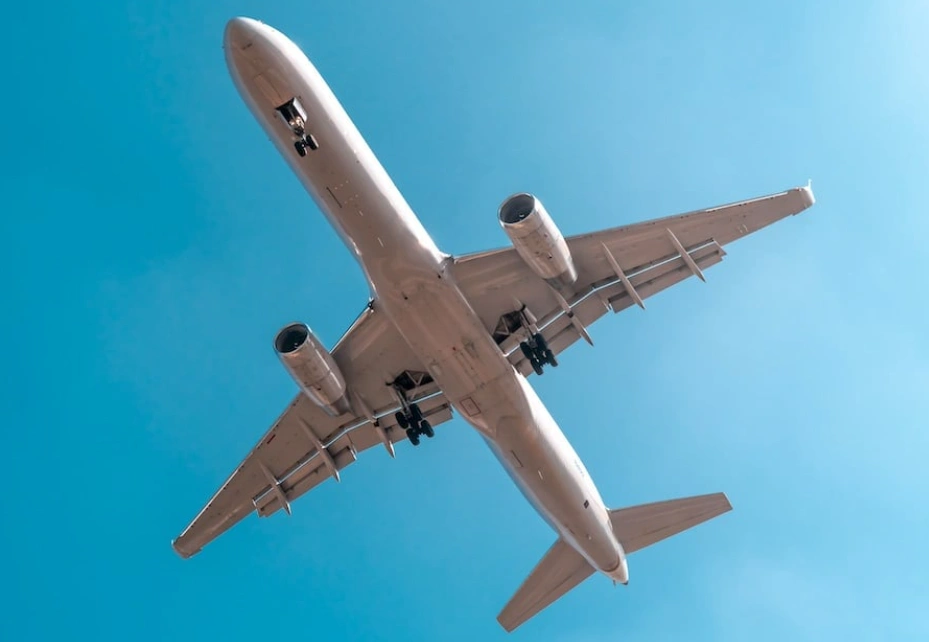
A commercial aircraft
We can all agree that while these environments are diverse, demanding and tough can be used for all. Fasteners for the aerospace industry are therefore some of the most sensitive and critical components to manufacture and use.
There is so much to assemble in the industries just mentioned – fuselage, nacelle, nose, wings, and many others. As such, the dimensions, properties, materials used, and standards used must be considered very carefully.
What Are The Basic Types Of Fasteners?
Virtually every industry uses different kinds of fasteners, from rivets to pins, and bolts to screws. These fasteners are expertly designed to handle all manner of mechanical requirements, depending on the specific application. The importance of these components in manufacturing and assembly of parts is beyond contention.
As fasteners are all-over-the-place, you can easily spot them in the industry, home, or business. Those popular in the industrial setting are screws, bolts, rivets, nuts, washers, and threaded inserts.

Standard fasteners
All these fasteners share properties that enable them to join and assemble objects successfully. Some of the common properties of standard fasteners are;
- Hardness
- Fatigue resistance
- Ease of installation
- Mechanical strength
- Standard dimensions – ANSI, ISO, etc.
The manufacturing processes for these fasteners are diverse, but CNC machining is among the most preferred. The multi-axis machining technique comes in handy for its versatility and speed.
When considering this method, the manufacturer considers various options, including 3 axis vs 5 axis CNC, based on factors such as cost of machining and part fastener complexity.
Further reading: https://proleantech.com/multi-axis-cnc-machining/
Try Prolean Now!
Properties Of Aerospace Fasteners
Aerospace fasteners are built with defining physical and mechanical properties that make the components suited for the demanding environment. These properties include high strength, low weight, high corrosion resistance, and reliable thermal behavior.
Each of these properties helps aerospace machines, whether it is a satellite hovering kilometers above the Earth, or a commercial airbus traversing continents. Here is a more detailed analysis of these properties.
High Strength
Aircraft fasteners must have high shear strength and tensile strength to support the huge aerospace forces and loads. The steady loads, dynamic loads, and static loads of an aircraft must be borne by the fasteners.
The fastener material must be capable of withstanding the expected stresses and loads to avoid accidents such as the fracturing of a propeller bolt for Jabiru J170-C aircraft from Muchea Greenside airfield, north of Perth, on 22 December 2021.
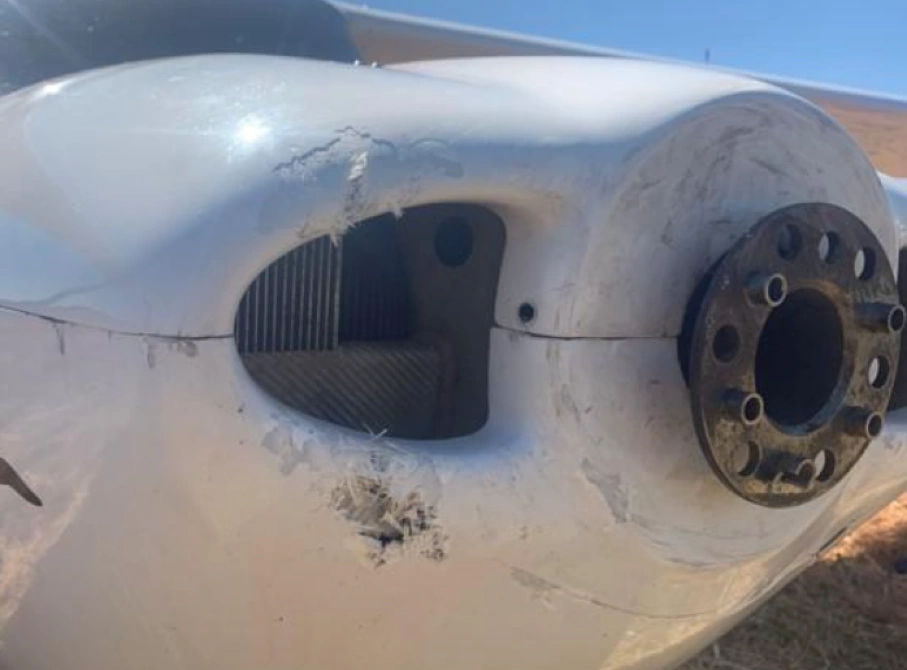
Propellor bolt fracture
Low Weight
With a single aircraft potentially equipped with millions of fasteners, the collective weight of airplane nuts bolts, pins, and rivets can be staggering. Having these devices lightweight goes a long way in minimizing the overall aircraft weight. Aluminum is one of the best materials for aerospace fasteners due to its high strength-to-weight ratio, and the added advantage of excellent machinability. .
High Corrosion Resistance
Most fasteners require this property, especially when in the demanding aerospace environment, where humidity and temperatures can be extreme. To counter this problem, manufacturers prefer materials such as titanium and stainless steel.
Reliable Thermal Behavior
Heat can be challenging in the aerospace environment, where systems such as propulsion generate a lot of it. Without a way to minimize this, the systems would easily overheat and eventually collapse. An easy way around this is using thermally reliable materials for fasteners.

Overheated aircraft engine
Aviation Standards For Fasteners
Precision and quality are nature to aviation products, fasteners included. This is due to standards such as AS9100, AS9120, BS9100, EN9100, EN9120.
Every fastener has to adhere to strict requirements of the industry for various reasons – safety, reliability, and traceability. We have these aviation standards to thank for the largely secure aerospace experiences we have continuously enjoyed and witnessed.
AS9100 Aviation Standard
This is the fundamental quality standard for excellent aerospace fasteners. Of most importance in manufacturing, according to this standard, is traceability and control of the manufacturing environment.
AS9120 Aviation Standard
Focus for this standard is on the Quality Management System, which is related to the AS9100 standard highlighted above.
EN9100 Aviation Standard
This is another critical industry standard for the design and manufacture of fasteners and other components. Its focus is process consistency, quality assurance, regulatory requirements, and supply management.
EN9120 Aviation Standard
These standards should be differentiated from the general fastener standards, such as the American Society of Mechanical Engineers (ASME)’s B18.18 for Quality Assurance For Fasteners, B18.1.2 for Large Rivets, and B18.6.3 for Machine Screws, Tapping Screws, and Metallic Drive Screws.
Every aviation manufacturing technology should comply with these and other industry standards. Discover the CNC machining process, its benefits, and applications—learn how it ensures precision and efficiency in modern manufacturing!
What Fasteners Are Used On Aircraft?
Bolts, screws, pins, and rivets – these are the common types of assemblies in aircraft assemblies. Yes, they sound ordinary, but their functions are in no way simple. These fasteners individually contribute to the stability, rigidity, and durability of aerospace components.
Aircraft Bolts
Bolts for aircraft assembly must exhibit superior strength, creep resistance, wear resistance, and be built according to existing aerospace standards. To withstand high environmental stresses these bolts must be made from appropriate materials.
Corrosion-resistant steel (CRES), titanium alloys, and heat treated steel are some bolt materials that meet these stringent requirements.

Aircraft bolt
Aircraft Screws
Precision machining is equally critical for aircraft screws, a type of fasteners with threads but have the threaded end hidden after installation – no accompanying nut. High tensile strength and corrosion resistance are some hallmarks of a quality aircraft screw.
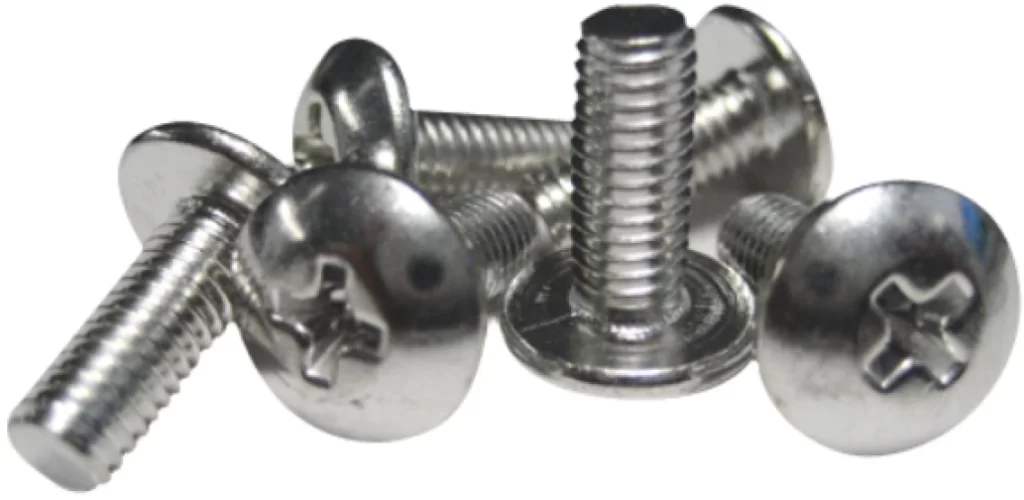
Aircraft screws
Aircraft Pins
Stringent precision machining standards are also applied to aircraft pins. Pins are available in different shapes and sizes, and so are their applications. Aerospace fasteners manufacturers must follow standards such as NAS and MS to deliver the safest and most suitable aircraft pins.
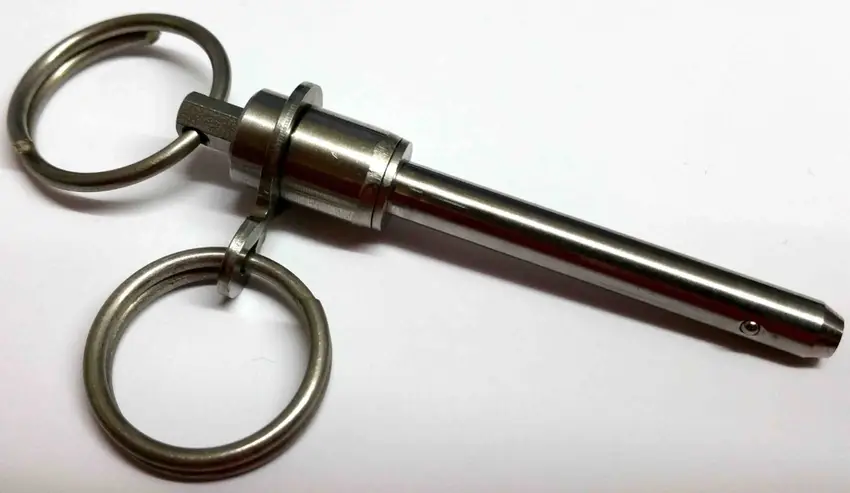
An aircraft pin
Aircraft Rivets
As permanent mechanical fasteners particularly as replacements for welding, rivets play a fundamental function in aircraft assemblies. The NAS1097 standard is essential in ensuring these fasteners are built for optimal performance in the punishing aerospace environments.
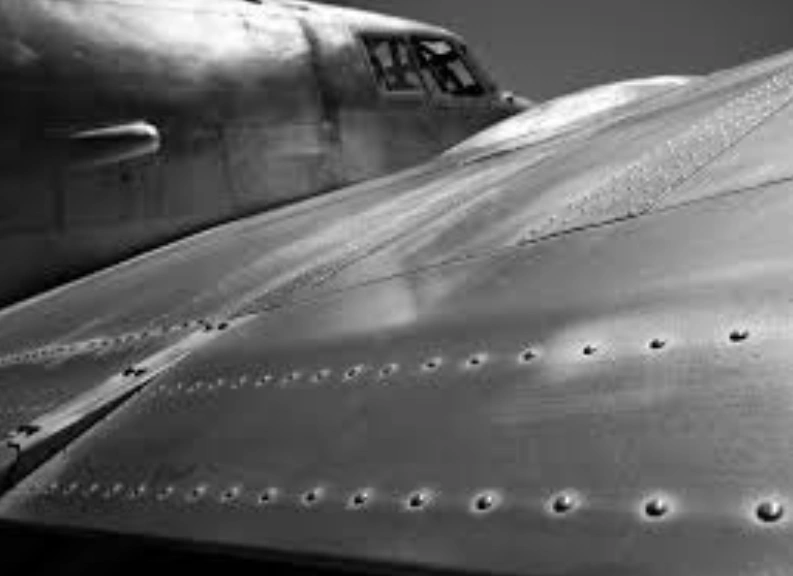
Aircraft rivets
Try Prolean Now!
What Is The Most Common Fastener In Aviation?
The most common fastener in aviation is the rivet, mostly because of its high strength-to-weight ratio, durability, and reliability.
Special Types Of Aerospace Fasteners
What we have described above are standard but crucal fasteners for the aerospace industry. Beyond them is a special category of fasteners engineered for extreme performance where unique strength, corrosion resistance, wear resistance, and other properties are critical.
The most common products in this category are hi-tigue, taper-lok, turn-lock, and Dzus turn-lock fasteners. The details of these special components are provided below.
Lockbolts
Also called huck bolts, these aerospace fasteners are a blend of rivets and bolts. One part of the assembly looks like a bolt while the other is a collar-like component. While easy to install, lockbolts are very strong, hence their use in places such as wing splice fittings and landing gears.
Blind Bolts And Blind Rivets
Blind bolts and blind rivets are used when only one section of an assembly is accessible. Aircrafts have many hard-to-reach areas that use these fasteners. You only need to insert the blind bolt in the designated hole and tighten it, while for the blind rivet, plastic deformation of the hold completes the joint.
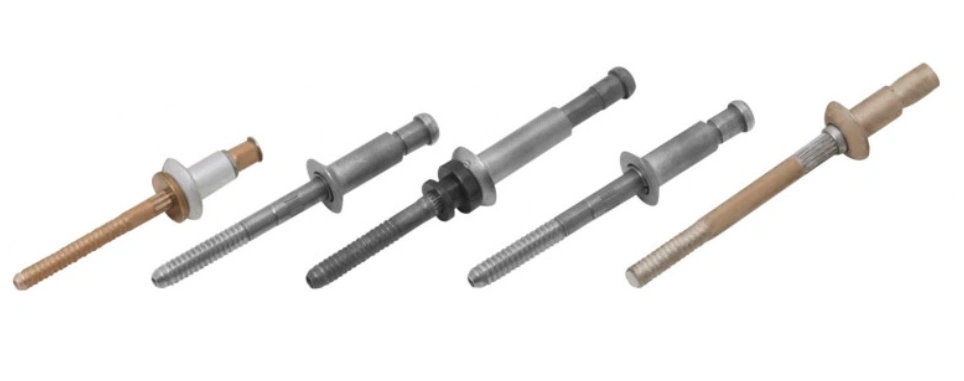
Blind bolts
Turnlock Aerospace Fasteners
Turnlocks are types of temporary fasteners common in aerospace assemblies. You can find them in aircraft electric panels and doors.
Hi-Lok Pins
Sometimes, the manufacturer wants a high tensile strength fastener in the harsh aerospace environment. That’s where hi-lok pins come in. Engineered to sustain a preload, this type of pin comprises a collar and threaded pin.
Materials Used For Aerospace Fasteners
The popular materials used for aerospace fasteners include aluminum alloys, stainless steel, titanium alloys, and Inconel. Composite machining is also increasingly present in aerospace fastener manufacture as more composite parts get used in this industry.
The choice of any of these is based on not just strength, but also other crucial properties such as corrosion resistance, suitability for the CNC machining process, and thermal performance.
So, what makes each of these options unique for aerospace fasteners? It is a blend of how the fastener enhances structure rigidity, suitability for extreme conditions, durability, and heat treatment, and so forth.
Aluminum Fasteners
Aluminum alloy fasteners are synonymous with aerospace application, chiefly due to their excellent strength-to-weight ratio and corrosion resistance. Further enhancement through heat treatment is common for aerospace-grade aluminum.
Take the T6-AI70xx series as an example. This material is prominent in aircraft bodies due to its superior properties derived from the heat treatment process of aluminum.
Steel Grade Fasteners
Also common in the aerospace fabrication projects are steel grades, which manufacturers value for strength and durability. While the material is generally heavier than aluminum alloys, it is still relevant for the above reasons. Fasteners are subjected to heat treatment to optimize these properties.
Titanium Alloys Fasteners
For a lighter yet stronger material, go for titanium alloy. However, the relatively high price is prohibitive for many users. That’s why these fasteners are mostly used selectively, usually as replacements for other materials in special circumstances.
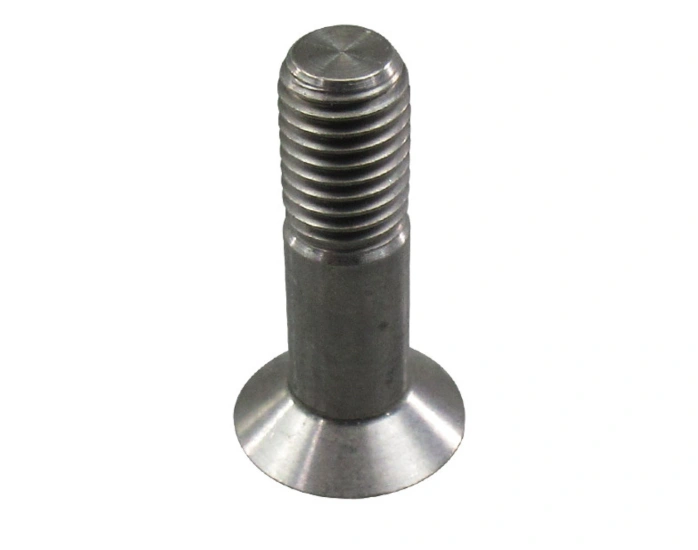
Titanium fastener for aircraft
Super Alloys For Aerospace Fasteners
Super alloys are special materials with high melting points, high strength, superb creep resistance, and excellent corrosion resistance. Fasteners made from these materials are ideal for temperature-limiting aerospace applications.
The aerospace industry uses these superalloys for fasteners;
- Inconel 718
- Waspaloy
- iron-nickel-chromium alloy A286
- Chromium steel alloy H-11
- MP35N
- Monel
Further reading: Sheet Metal Fabrication Services
Coatings For Aerospace Fasteners
Fasteners for the dynamic aerospace conditions require coverings – black oxide, silver, zinc, nickel, cadmium, and others – for enhanced protection against corrosion, scratches, air pressure, and other elements that could jeopardize performance.
This is a critical aspect of engineered fasteners for aerospace application considering that even the slightest surface irregularity can result in a catastrophe.
Black Oxide Coating
This coating is characterized by a thin chemically-generated layer applied to fasteners, particularly those of ferrous metals. The black oxide coating on aerospace fastners enhances dimensional stability, corrosion resistance, and thermal stability.
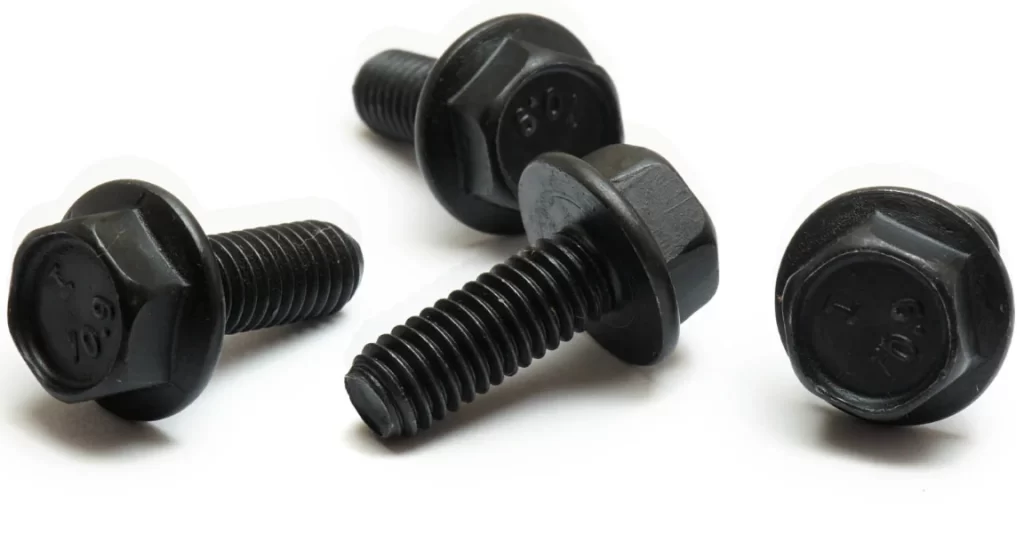
Black oxide coated bolts for aircraft
Silver Coating
Silver coating enhances the corrosion resistance and electrical conductivity of a part. When used for aerospace fasteners, this plating solution gives an attractive finish fit for any part of the aircraft.
Nickel Coating
Nickel coating entails covering the fasteners in a nickel layer, which not only provides a bright finish but also enhances corrosion resistance. It can be used for assembling aircraft parts that require both corrosion resistance and visual appeal.
Cadmium Coating
This type of fastener coating enhances corrosion resistance, making the component ideal for harsh environments. The sacrificial layer formed is attacked by the corrosive agents instead of the fastener material.
ProleanTech, The Best Aerospace Fastener Provider
Critical factors for manufacturers for aerospace fasteners are installation process, weight requirements, strength, and load requirements, among others. In an industry where a simple design miscalculation can cause unfathomable results, choosing the fastener manufacturer carefully in light of such factors is necessary.
ProleanTech is a popular CNC machining company with aerospace fasteners as part of the products portfolio. With years of experience supporting the aerospace industry with fasteners and other products, the company knows how to identify and meet customers’ needs. Contact us with all your aerospace fastener requests.
All the different type of fasteners are available, from specialty fasteners to standard ones. Whatever the item, quality and reliability from advanced manufacturing processes coupled with high expertise are evident.
When looking for modern, quality aerospace hardware, dont hesitate to call the team. Get your quote today!
Conclusion
Aerospace fasteners play a vital function in the performance, safety, and aesthetics of the aircraft. From the analysis provided in this article, these devices should be designed and manufactured expertly.
Key aspects of the fasteners have been highlighted, including the basic types, properties, materials used, and common coatings.

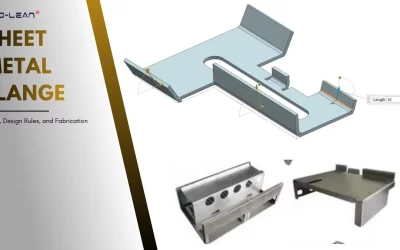
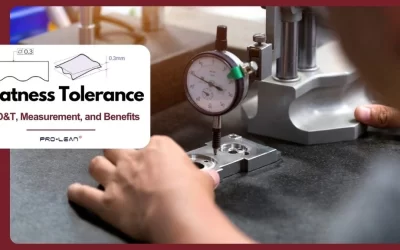
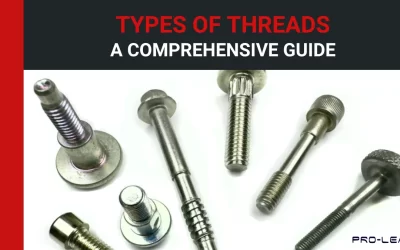
0 Comments